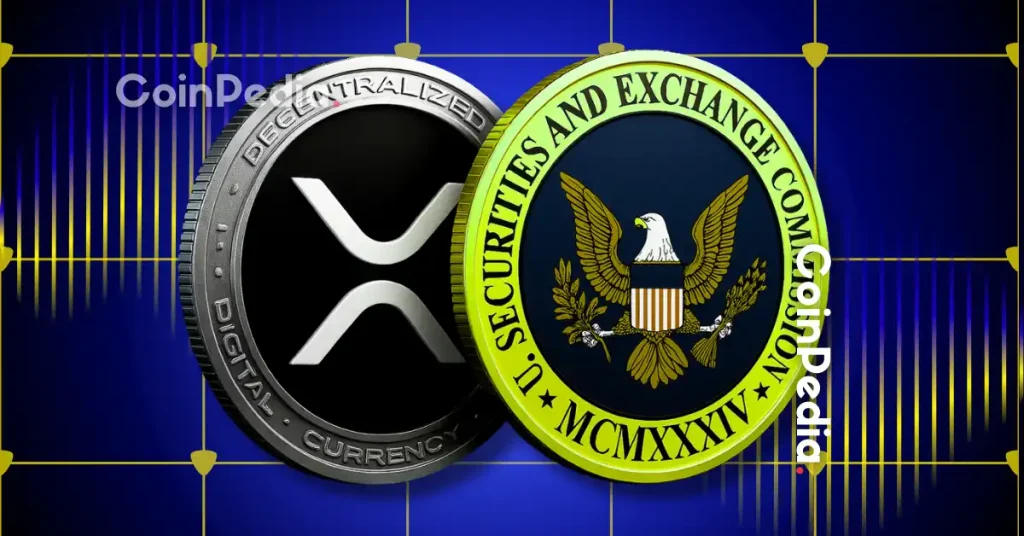
Navigating the Regulatory Minefield: The Rise and Challenges of XRP
Introduction: The Crypto Conundrum
The cryptocurrency landscape is a paradox of innovation and regulation, where the promise of decentralized finance clashes with the need for legal oversight. At the center of this storm is the question of classification: Are cryptocurrencies currencies, commodities, or securities? The answer dictates the level of regulatory scrutiny and compliance required, shaping the future of digital assets. Ripple’s XRP has become a case study in this regulatory battleground, illustrating the complexities and consequences of navigating this terrain.
The Security Question: A Regulatory Quagmire
The classification of crypto assets as securities is one of the most contentious issues in the industry. The U.S. Securities and Exchange Commission (SEC) has historically applied the Howey Test to determine whether a crypto asset constitutes an investment contract. This test evaluates whether investors are pooling money into a common enterprise with the expectation of profits derived from the efforts of others. If the test is met, the asset is classified as a security, subjecting it to registration requirements, disclosure obligations, and potential liabilities.
The ambiguity surrounding this classification has led to a regulatory gray area, where crypto ventures often operate without clear guidance. This lack of clarity has resulted in varying legal interpretations and applications of securities laws to novel crypto products. While some argue that this ambiguity accelerates innovation, it also carries the risk of regulatory backlash, as seen in the SEC’s lawsuit against Ripple.
Ripple and XRP: A Pivotal Case Study
Ripple’s legal battle with the SEC has been a defining moment for the crypto industry. The SEC alleged that Ripple conducted an unregistered securities offering through the sale of XRP, arguing that XRP was sold as an investment contract. Ripple, however, maintained that XRP is a currency and a technology used for facilitating cross-border payments, not a security.
The lawsuit has been a protracted and complex affair, involving extensive discovery, expert testimony, and legal maneuvering. A key aspect of the case revolved around whether Ripple had provided reasonable expectations of profit to XRP purchasers based on its efforts. The SEC pointed to Ripple’s marketing materials and public statements as evidence of such expectations, while Ripple argued that XRP’s price was influenced by a variety of market factors, not solely by Ripple’s actions.
Ripple’s Partial Victory and the Road Ahead
In a significant development, a U.S. court issued a ruling in July 2023 that XRP is not a security when sold to retail investors on exchanges. This ruling was widely viewed as a partial victory for Ripple and the broader crypto industry, as it provided some clarity on the regulatory status of XRP and potentially other similar crypto assets. However, the court also ruled that XRP was a security when sold directly to institutional investors.
The SEC’s subsequent attempt to appeal this ruling was dismissed, further solidifying Ripple’s position. This dismissal has been interpreted as a significant removal of regulatory hurdles surrounding XRP, potentially allowing for greater adoption and utilization of the cryptocurrency.
Despite this positive outcome, the legal battle is not entirely over. The court still needs to address remaining claims related to Ripple’s individual executives. Moreover, the SEC could potentially pursue other legal avenues to challenge the regulatory status of XRP or other crypto assets.
The Impact on Market Makers and XRP’s Utility
The resolution of the SEC’s lawsuit against Ripple has significant implications for market makers and the overall utility of XRP. Market makers play a crucial role in providing liquidity to exchanges, ensuring that there are always buyers and sellers available to facilitate trading. The regulatory uncertainty surrounding XRP had previously deterred some market makers from actively participating in XRP markets, fearing potential legal repercussions.
With the dismissal of the SEC’s appeal, this regulatory overhang has been largely removed, potentially paving the way for greater participation from market makers. This increased liquidity could lead to tighter spreads, reduced volatility, and improved price discovery for XRP.
Furthermore, the regulatory clarity surrounding XRP could unlock its potential for use in various applications, particularly in cross-border payments. Ripple has long promoted XRP as a faster and cheaper alternative to traditional payment systems, and the removal of regulatory hurdles could accelerate its adoption by financial institutions and payment providers.
The Broader Implications for the Crypto Industry
The Ripple case has broader implications for the entire crypto industry. It underscores the importance of regulatory clarity and the need for a balanced approach that fosters innovation while protecting investors. The case also highlights the challenges of applying existing securities laws to novel crypto assets and the need for tailored regulations that address the unique characteristics of this emerging technology.
The outcome of the Ripple case could influence the SEC’s approach to regulating other crypto assets and could shape the future of crypto regulation in the United States and globally. It is likely that other crypto ventures will closely analyze the Ripple case and seek to learn from its experiences in navigating the regulatory landscape.
A Cautious Conclusion: The Future of Crypto Regulation
The journey of Ripple and XRP serves as a powerful reminder of the challenges and opportunities that exist in the rapidly evolving world of cryptocurrency. While the partial victory in the SEC lawsuit represents a significant step forward, it is crucial to recognize that the regulatory landscape remains uncertain and dynamic. Crypto ventures must remain vigilant, proactive, and committed to compliance to navigate this complex terrain successfully.
The future of crypto regulation will likely involve a delicate balancing act between fostering innovation and protecting investors. As the industry matures and regulatory frameworks evolve, it is essential for stakeholders to engage in constructive dialogue to shape a regulatory environment that promotes responsible innovation and sustainable growth. The “Kings of Crypto” must learn to navigate the regulatory minefield with wisdom and foresight, or risk being dethroned by the ever-changing tides of the law.





